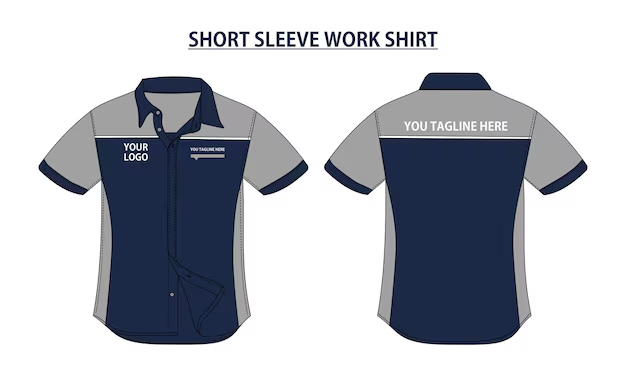How to Maintain and Care for Work Uniforms

There are many compelling reasons for companies to invest in work uniforms. From boosting team spirit to enhancing workplace safety and customer trust, uniforms offer numerous benefits. However, managing a workwear program comes with its challenges, particularly in maintaining and caring for the uniforms. Here are five steps a company can take to simplify uniform management and maintain the longevity of workwear.
1. Choose high-quality workwear
The surest way to get longevity from workwear is to choose the highest-quality uniforms from the start. When choosing uniforms, consider the fabric, design, and construction. A long-lasting uniform leverages high-performance and technologically advanced fabrics and innovative features and designs like mesh flex panels that increase breathability and movement for added comfort.
For businesses in certain industries, outfitting teams with protective uniforms isn‘t just a choice - it‘s a compliance requirement. This is where partnering with a uniform provider becomes crucial. These experts understand which industries need to comply with specific safety standards and can recommend uniforms that meet those requirements. Whether it‘s flame-resistant (FR) gear or high-visibility workwear for construction zones, a knowledgeable uniform provider ensures your team is not only safe but also compliant with industry regulations.
2. Plan for a surplus inventory
Managing the ordering and distribution of work uniforms to new hires and current employees can quickly become overwhelming if not handled efficiently. Due to weight fluctuations, employees may also need resizing. So, it‘s important to ensure your entire supply chain is optimized. Streamlining your ordering and distribution processes can be vital for preventing delays and shortages. Effective inventory management is key, and software solutions can help forecast stock levels and reduce overstocking or understocking issues. Without these tools and strategies, businesses may struggle to keep uniforms on hand, which might lead to downtime when they need replacements right away. The complexity of keeping track of uniform needs can make outsourcing these tasks a valuable solution.
3. Make a plan for uniform repairs
While ordering uniforms with high-quality materials can help reduce tears and other malfunctions, uniforms will eventually wear down. That means it‘s important for businesses to have the right professional on call to make changes to work uniforms as needs arise.
Additionally, it‘s essential to consider the construction of the workwear. Look for features like double or triple-needle stitching on seams and reinforced bar tacks. These design elements can ensure durability and help uniforms withstand the rigors of demanding jobs. Fixing loose buttons is crucial, especially in the food service industry, where a missing button can become a hazard. Protective uniforms should also be maintained so that they don‘t lose their protective qualities over time. These clothes require special attention during laundering and regular maintenance to minimize the risk of uniform failure, especially for workers in hazardous environments.
In addition to having a professional ready to repair any damage, the business will also need a process for employees to report uniform issues and request a repair. Making it simple to request a repair can help uniform longevity over time.
4. Develop a standard cleaning schedule and process
To keep uniforms looking sharp, a company must determine how and when uniforms should be cleaned. If uniform maintenance is the responsibility of employees, there will need to be a standard operating procedure for cleaning. Otherwise, a business can end up with a staff of employees wearing uniforms that are slightly discolored or disheveled.
One way to avoid potential issues with uniform maintenance is to hire a professional cleaner. Not only can industrial launderers provide more eco-friendly services by using less water and green detergents, but their high-temperature wash formulas allow for reduced detergent use, making the process even more environmentally friendly. For industries like healthcare and food service, employers should hire a launderer with certifications in hygienic laundering, such as food safety or healthcare garment certifications, to ensure 99.99% of harmful bacteria are removed and cross-contamination is avoided. If your company decides to outsource uniform laundering, you should establish a reliable drop-off and pick-up schedule and ensure employees have enough uniforms to rotate through while some are being cleaned.
5. Partner with a uniform rental provider
Instead of the company having to manage each of these steps, a uniform rental provider can simplify the process of getting clean, professional, high-quality uniforms delivered efficiently and consistently. The right partner can help a business decide which uniforms are best suited for itself and its employees, meet productivity and professional image requirements, support customization and fulfillment, deliver hygienically clean uniforms on a designated schedule, and ensure uniforms meet strict safety and quality standards through regular inspections and maintenance (such as automatic repairs and replacements, so there are no uniform shortages).
The bottom line
Caring for uniforms is a critical component of introducing a workwear program for employees. While a business can be responsible for ordering, fulfillment, cleaning, and repairs, it‘s also possible to outsource these activities to a reputable vendor. Working alongside a uniform rental provider can be a cost-effective solution to help ensure worker safety, productivity, professional image, and satisfaction with a uniform program.










